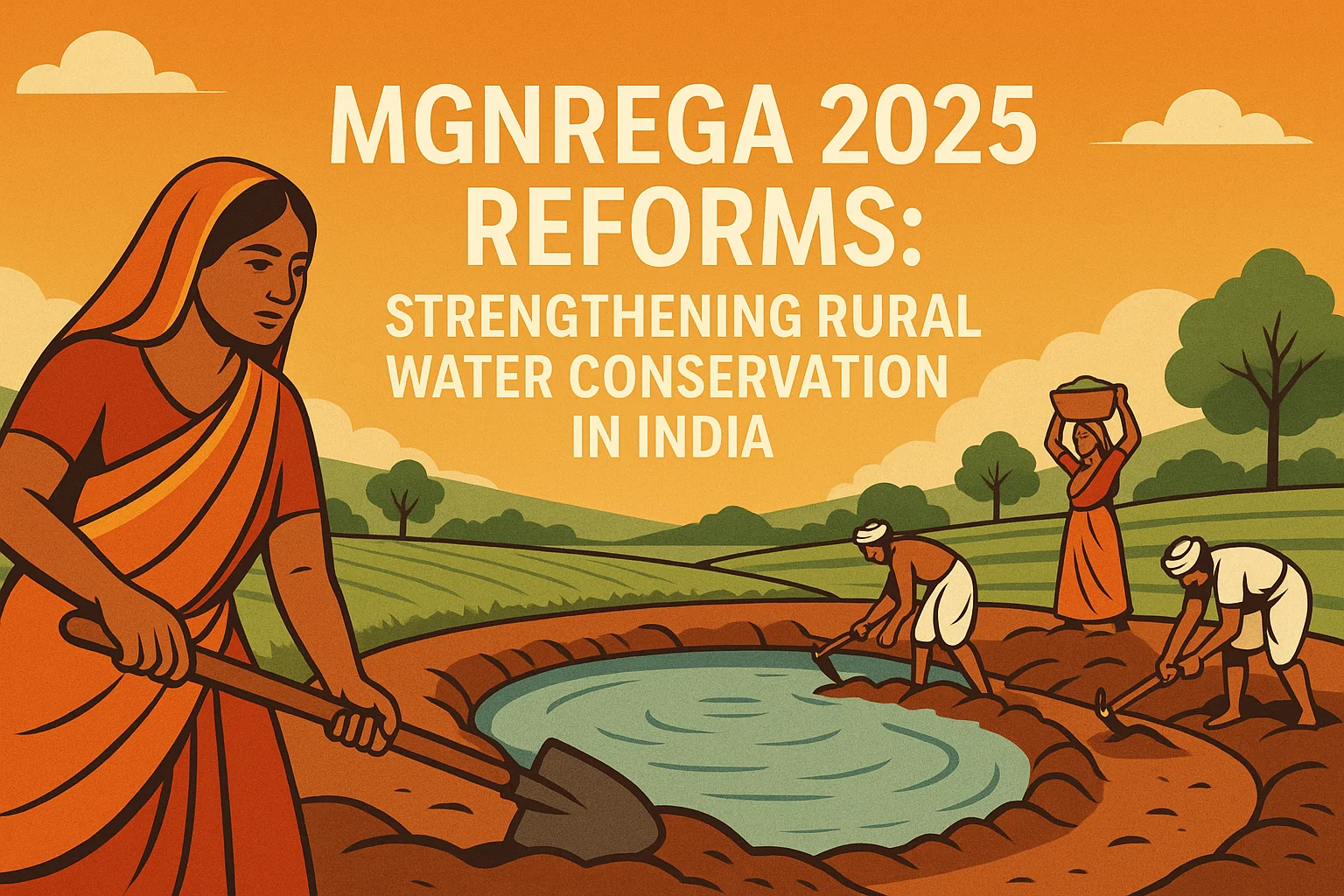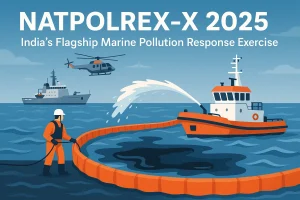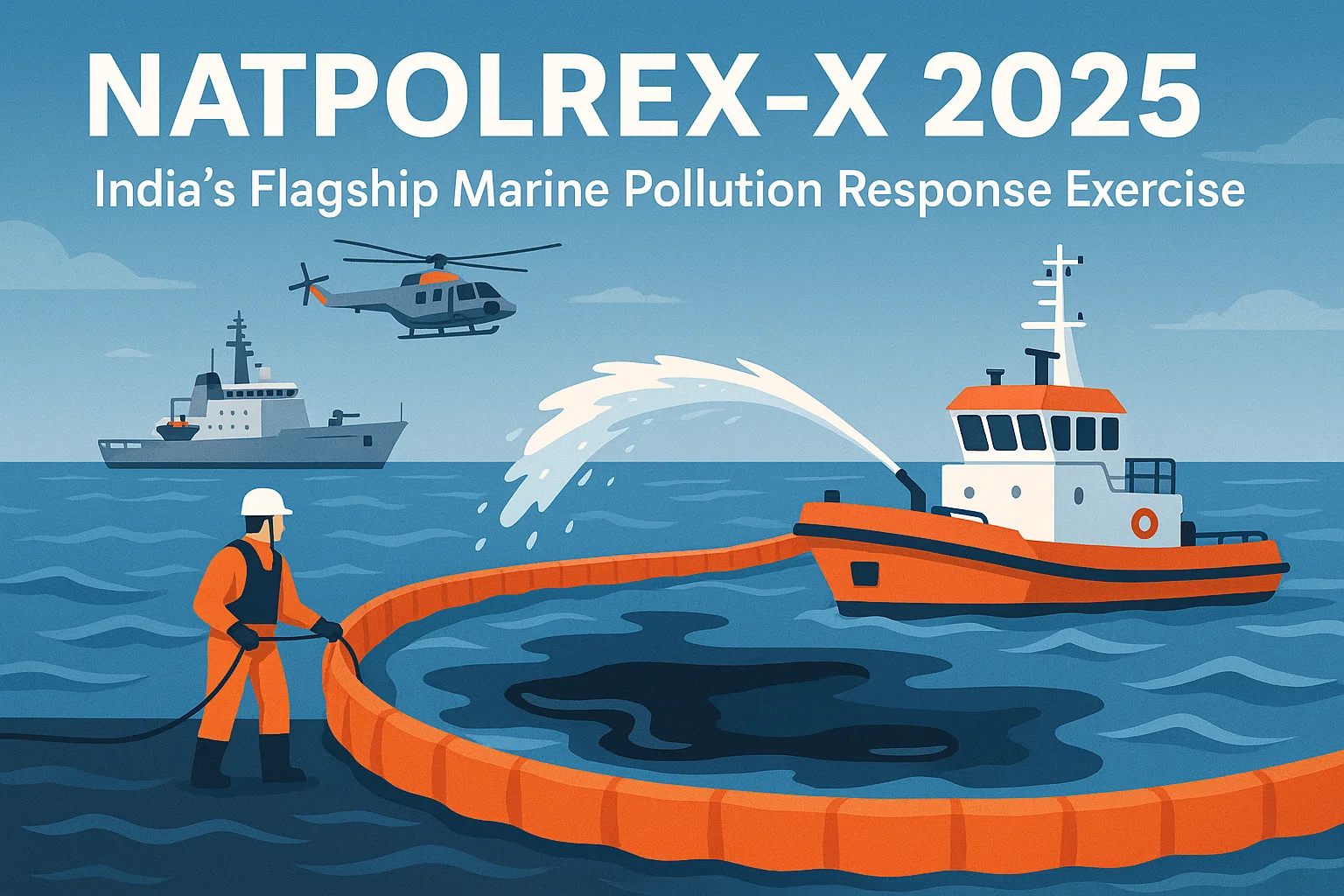MGNREGA 2025 Reforms: Strengthening Rural Water Conservation in India
Learn how MGNREGA 2025 reforms mandate block-level spending on water conservation and harvesting projects. Explore the impact on groundwater resilience, rural employment, and sustainable agriculture in India.
Context
Amid growing concerns over India’s deepening groundwater crisis, the Centre has amended Schedule-I of the MGNREGA Act, 2005, mandating minimum spending on water conservation and harvesting projects across rural blocks. This reform aligns rural employment with ecological sustainability, ensuring that livelihood generation contributes to long-term water security.
Amendments to the Act
The Ministry of Rural Development (MoRD) has revised Schedule I of the Mahatma Gandhi National Rural Employment Guarantee Act (MGNREGA), 2005. The amendment introduces a new proviso under Paragraph 4(2), stipulating minimum allocations for water-related works based on local groundwater conditions:
-
Over-exploited and Critical Blocks: 65% of MGNREGA funds must be used for water conservation and harvesting.
-
Semi-critical Blocks: Minimum allocation of 40% of funds.
-
Safe Blocks: At least 30% of funds should support water-related projects.
Previously, fund allocation for water works was determined at the district level, offering flexibility that often diluted the impact. The block-level mandate now ensures that MGNREGA investments are closely aligned with local hydrological realities, maximising ecological benefit.
Role of Schedule I in MGNREGA
Schedule I defines the permissible works and operational norms under MGNREGA. It includes activities like rural connectivity, afforestation, land development, and other projects that create durable community assets. Unlike amendments to the Act itself, changes to Schedule I can be made through government notifications, enabling timely and targeted interventions.
Since 2006, Schedule I has been modified 24 times, reflecting evolving priorities in rural development and environmental sustainability. The 2025 amendment represents a strategic shift towards integrating climate-resilient measures into employment guarantee schemes.
Rationale Behind the Amendments
-
Addressing India’s Water Crisis:
According to the Central Ground Water Board (CGWB, 2024), over 11% of India’s blocks are over-exploited, with another 13% classified as critical or semi-critical. States such as Rajasthan, Punjab, Haryana, and Tamil Nadu are particularly affected, making targeted groundwater interventions imperative. -
Aligning Rural Employment with Ecological Goals:
The reform reflects a shift from short-term employment relief to sustainable asset creation. The Economic Survey 2022–23 notes that 65% of rural employment depends on agriculture, making water security crucial for livelihood sustainability. -
Government’s Strategic Initiative:
Prime Ministerial directives have emphasised that a portion of the ₹86,000 crore MGNREGA budget (FY 2025–26) should directly support water resilience. The Jal Shakti Ministry estimates that approximately ₹35,000 crore could now be channelled into water-related projects, from rainwater harvesting and check dams to pond rejuvenation and watershed management.
By linking employment generation with hydrological resilience, MGNREGA is transformed from a reactive drought-relief mechanism into a preventive tool for water security, strengthening rural livelihoods while tackling ecological stress.
Implications
The amendment ensures that MGNREGA serves as a dual-purpose scheme:
-
Economic: Provides guaranteed wage employment to rural populations, particularly during lean agricultural seasons.
-
Environmental: Promotes sustainable water management, enhances groundwater recharge, and builds resilience against droughts and climate variability.
This approach integrates social protection, climate adaptation, and resource management, making rural development more holistic and future-ready.
Conclusion
The 2025 MGNREGA amendments mark a historic policy shift, making water conservation a central component of rural employment programmes. By mandating block-level minimum spending, the government ensures that MGNREGA not only secures livelihoods but also contributes meaningfully to India’s water resilience and agricultural sustainability. This reform exemplifies the potential of labour-based schemes to simultaneously address economic, social, and environmental objectives.
Subscribe to our Youtube Channel for more Valuable Content – TheStudyias
Download the App to Subscribe to our Courses – Thestudyias
The Source’s Authority and Ownership of the Article is Claimed By THE STUDY IAS BY MANIKANT SINGH




